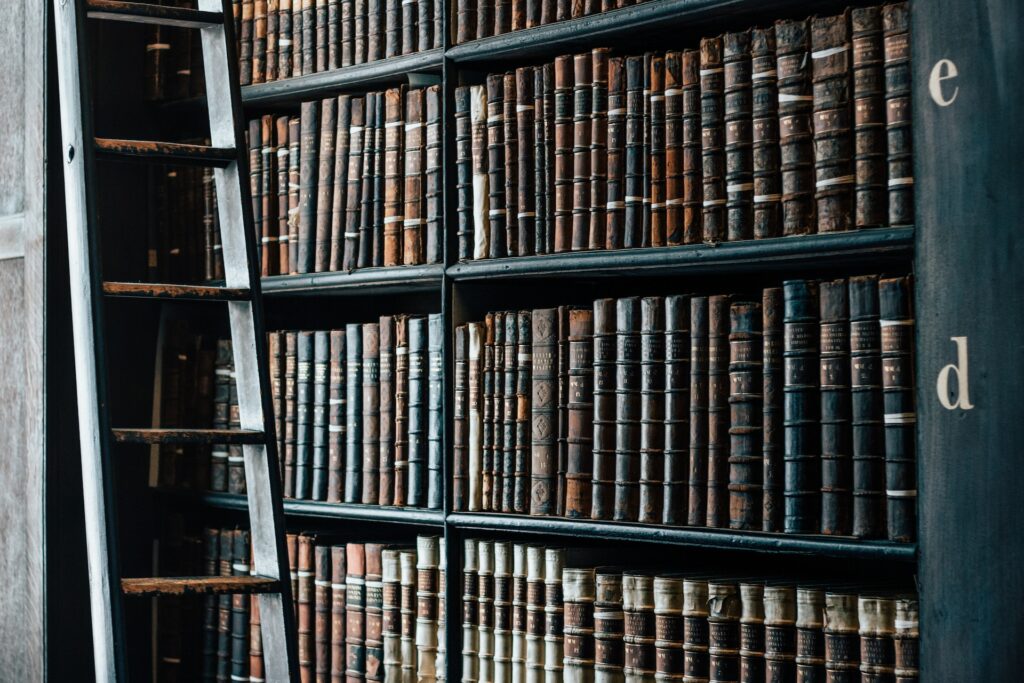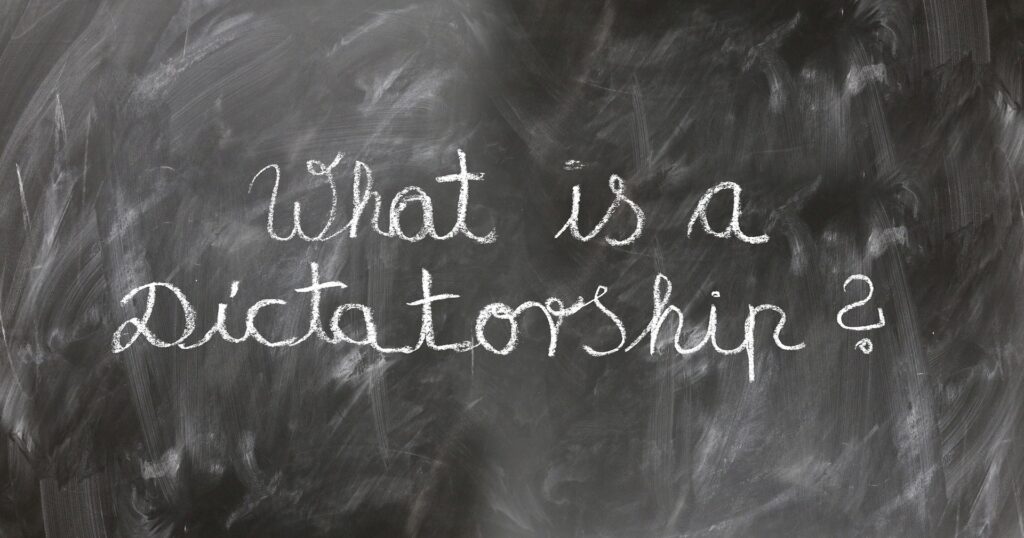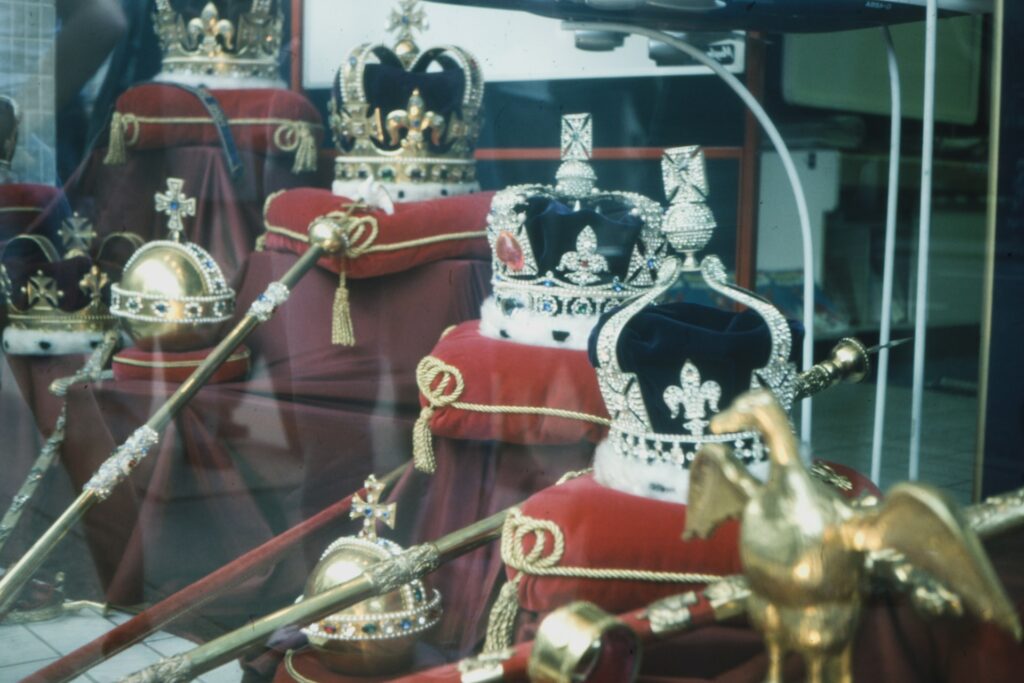Intro
The political spectrum spans a diverse range of ideologies and structures. Each is unique in its approach to governance and power. Monarchy and dictatorship are potent systems. They have shaped human history. They stand out among these structures.
In this blog post, we aim to explain these political power structures’ origins, functions, and impacts.
Defining Political Power Structures: Monarchy and Dictocracy

To navigate the complex terrain of political systems, it’s crucial to understand what we mean by ‘monarchy’ and ‘dictatorship’. In a monarchy, power is typically inherited. A single person holds the supreme power in this form of government. This person rules their state as a monarch – a king, queen, or emperor. This rule is often for life or until abdication, and power is passed down through familial lines.
Now, let’s shift gears to dictatorship. Here, power is not passed down through generations but is often seized. Dictators rule with an iron fist, having absolute control over their nation. They are not restricted by constitutions or other social and political factors. Decisions are made at the whim of one individual, often without a fair system of checks and balances.
Understanding these definitions is like having a map for our journey through political history and current events. It’s critical to remember that these structures are not static but are dynamic. They change according to cultural shifts, societal needs, and individuals who hold power. We will see the many shades of monarchy and dictatorship as we delve deeper into their histories, impacts, and futures. We will also see the significant roles they play in shaping our world.
The History and Evolution of Monarchies

Embarking on a journey through time, let’s explore the vibrant saga of monarchies. We will trace their earliest recorded origins to Sumer, present-day Iraq, around 4000 B.C. A monarchy is a system where a single person, or monarch, reigns supreme. It was once the most common form of governance in the world. Dynasties rose and fell. Monarchies were a common thread weaving together the narrative of human civilization.
However, like a river shaping a landscape, the flow of time brought about dramatic changes. Over the centuries, many monarchies underwent a transformative evolution. Societal changes and cultural shifts influenced them. These alterations led to the development of constitutional monarchies. In this adaptation, the monarch’s powers are curbed and delineated by law.
In this version of monarchy, we see a blending of the ancient and the modern. Monarchs retain symbolic significance and specific powers. However, they have to operate within the confines of a constitution. This development is visible in nations like the United Kingdom. The monarch is a figurehead, and the real power lies with the Parliament.
On the other end of the spectrum, absolute monarchies still persist. The monarch maintains unrestrained authority. Saudi Arabia exemplifies this form. The monarch’s word is law. The reins of power are gripped without any constitutional limitations.
The varied tapestry of monarchies we see today is a testament to their enduring relevance and adaptability. Monarchies take many forms, from a ceremonial role to autocratic rule. Yet, the essence of monarchy is power in one individual’s hands. This continues to shape nations and histories in many ways. Thus, the story of monarchies remains more than just a tale of the past. It’s an ongoing narrative intertwined with our present and future.
Understanding Dictatorships: From Origin to Present

Tracing the Evolution from Roman Crisis Management to Contemporary Authoritarian Regimes
From the corridors of the Roman Republic emerges the concept of a ‘dictator’, an office held temporarily in times of crisis. Fast forward to the present, and the term has changed. Now, it’s associated with absolute power. It’s also linked to severe repression of political opposition. It’s related to egregious human rights abuses. Modern dictatorships paint a stark picture far removed from their Roman origins.
These systems skew the balance of power. A single individual or a small group wields unchecked authority. In this realm, constitutional restraints are often tossed out the window. The leader’s whim becomes the law of the land. This description may seem dystopian. Yet, it depicts regimes like Adolf Hitler’s Germany or Kim Jong-un’s North Korea. The dictatorial rule has a grip on those nations.
Dictatorships today extend their control far beyond the political sphere. They delve into every aspect of social life. They curtail freedoms, stifle dissent, and maintain an atmosphere of fear and compliance. It’s an unyielding iron-fist approach. Power doesn’t change hands peacefully. It changes through force or the death of the dictator.
Navigating Variations, Origins, and Dynamics of Authoritarian Rule Across Societal Landscapes
While this form of governance might appear static and monolithic, dictatorships can vary. Their tactics and degree of control can differ based on cultural, social, and political contexts. For instance, some dictatorships might exercise much control over the economy. Other dictatorships might focus more on political repression. Despite these variations, they share a common thread. The unbalanced accumulation and exercise of power are unchecked by democratic processes or legal constraints.
However, it’s also essential to remember that dictatorships aren’t born in a vacuum. Often, they rise in response to political instability, societal unrest, or perceived threats to national security. These conditions create a fertile breeding ground for dictatorial regimes. They highlight the complex dynamics involved in forming and maintaining these systems. By understanding the origins and evolution of dictatorships, we can better grasp the broader political landscape. It helps us navigate the complexities of power structures in our world today.
Monarchy Vs. Dictatorship: The Power Dynamic

When navigating the intricacies of monarchy and dictatorship, an integral factor that distinguishes the two is the source of their power’s legitimacy. In a monarchy, the birthright serves as the passport to the throne. Their reign is often recognized by traditional customs and laws. The lineage is typically well-rooted in history, resulting in this recognition. This inherent right to rule often gives monarchies a sense of stability and acceptance among the populace.
In sharp contrast, a dictator’s grasp on power usually springs from force or manipulation. Their ascension rarely follows the rule book. Their regime often stands on the shaky grounds of illegitimacy. Consequently, dictators may face a constant undercurrent of resistance and instability.
However, it’s crucial to note that not all monarchies and dictatorships fit into these descriptions. Some monarchs may use force or coercion. Some dictators may command widespread support. Others institute legal measures to legitimize their rule. Thus, the legitimacy of power differentiates monarchy from dictatorship. However, the actual dynamics can vary based on the individual ruler. They also depend on the specific historical and societal context.
The Social Impact of Monarchy and Dictatorship

How monarchies and dictatorships steer the social fabric of a nation is a fascinating topic. Monarchies, especially constitutional ones, can provide a semblance of stability and unbroken continuity. With the monarch serving as the symbolic head, the nation gets an enduring figure to look up to. Yet, the same system can also foster social disparity. Concentrating power within one family can further solidify the social hierarchy. It creates a chasm between the elite and common folk.
Dictatorships, on the other hand, paint a different picture. The absolute power dictators hold tends to suppress dissent and curtail civil liberties. In the face of unyielding authority, societies often find their voices stifled. Their actions are also monitored. Fear becomes a commonplace emotion, and silence becomes a survival strategy.
However, the silver lining in such regimes can sometimes be the semblance of stability, especially during turbulent times. The quick, unilateral decision-making process can create an illusion of control and order amidst chaos. This stability often comes at a significant cost to freedom and democracy. It’s important to note that.
What stands out is that the social impact of these power structures is not uniform. It is subject to the ruler’s leadership style and the nation’s socio-political context. Thus, we’ve outlined some broad societal effects. The actual impact can manifest in myriad nuanced ways. It can differ across countries and historical eras.
The Economic Consequences of Monarchy and Dictatorship

Navigating monarchies’ and dictators’ financial arteries can be akin to walking a tightrope. The stability and wealth of these nations often hang in the balance. They are shaped by the rulers’ capabilities and the existing institutions’ inherent strength. Monarchs have hereditary reigns. They can foster economic stability if judicious and competent in managing their kingdom’s resources. Similarly, the economic fate of a dictatorship is often tied to the dictator’s vision, administrative insight, and the overall stability of their regime.
However, the concentration of power can often be a double-edged sword. When energy flows from a single source, unchecked by democratic processes, it can pave the way for corruption and financial mismanagement. Many dictatorships suffer from widespread graft. Wealth is often siphoned off for personal gain or to consolidate power. Unchecked corruption can gnaw at the economy’s foundation. It can lead to instability and widespread poverty.
Monarchies can also suffer from economic disparities. The wealth is concentrated in the hands of a privileged few. The common folk often bear the brunt of this imbalance. It creates a wealth gap that can strain the nation’s socio-economic fabric.
Furthermore, both these structures can witness a violation of property rights. When the state or the ruler has absolute power, it can lead to arbitrary confiscation of property or resources. This creates an environment of insecurity and unpredictability. It can deter investment and stifle economic growth.
Despite these potential pitfalls, it’s worth noting that not all monarchies and dictatorships succumb to these economic challenges. Some manage to leverage their unique power structures to drive growth and prosperity. Ultimately, the economic outcomes hinge on a delicate interplay of leadership, policies, institutional strengths, and societal factors.
The Future of Monarchy and Dictatorship

Navigating the road ahead for monarchies and dictatorships is like stepping into a realm of unpredictability. On one hand, we witness monarchies adapting to the pulse of modernity. Many are transitioning to constitutional structures, yet rooted in their historical legacy. Dictatorships seem to be returning in regions with social and political unrest. This is problematic. However, the resurgence of dictatorships seems disconcerting in regions with socio-political unrest.
The winds of change, however, are in constant flux. Social movements, technological advances, and the global push toward democracy and human rights may yet reshape these power structures. As a result, the survival and evolution of these forms of governance will depend on their ability to adapt, reform, and respond to these changing global dynamics. As we journey into the future, these political landscapes remain fascinating. We can analyze and understand them. We are observers and participants of this global narrative and we hold the power to influence these systems, ensuring they serve their people’s best interests. Hence, it’s essential to understand these power structures in our quest for a more fair, democratic, and prosperous world.



